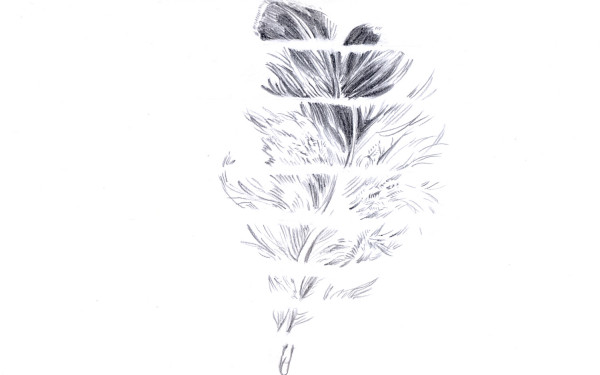Vigil Held In Memory of Loretta Saunders
Countrywide Vigil Draws Attention to the Issue of Missing and Murdered Indigenous Women
Nearly a hundred people huddled together under falling snow Thursday evening at the corner of Guy St. and de Maisonneuve Blvd. in honour of the death of Loretta Saunders, whose missing body was recovered in February near a highway in New Brunswick.
Saunders, 26, was three months pregnant and was writing an honours degree thesis at Saint Mary’s University in Halifax on the subject of missing and murdered indigenous women when she was killed. Her two roommates were charged with first-degree murder in her death at the beginning of the month.
“We’re here today to honour Loretta Saunders’ death and to ensure that her work was not in vain,” master of ceremonies Alisha Mascarenhas said over speakerphone to the crowd.
The gathering, held by Montreal-based grassroots campaign Missing Justice, came in answer to a call by Saunders’ family, and particularly her sister Delilah Terriak, for a nationwide vigil. Over a dozen cities in Canada held vigils on Thursday in honour of Saunders’ death and as a reminder of the estimated hundreds of cases of missing and murdered indigenous women.
2_700_1050_90.jpg)
Various people gave speeches perched atop a bench at Norman Bethune Square, opposite the famous Canadian’s statue. Their talks were punctuated by performances by the Buffalo Hat Singers, a group of contemporary powwow singers, and spoken-word artist Moe Clark, as well as a moment of silence—all during rush hour.
“It’s very saddening to know that any life that is taken the way the women in this country, this continent, or anywhere in the world are taken—unnecessary death! It’s not necessary,” powwow singer Norman Achneepineskum told the crowd.
“Thank you for coming out and supporting this, for our friend Loretta Saunders who lost her life doing what Maya does. We don’t want to lose anyone else,” Achneepineskum added, referring to the Concordia-based Centre for Gender Advocacy’s promotions coordinator and a founder of Missing Justice, Maya Rolbin-Ghanie, who was at the vigil.
“You have all these stereotypes about—oh you know, ‘Those are poor women, they put themselves at risk, they’re involved in sex trade.’ In her case, what makes it different is she completely counters all those stereotypes,” Shehla Arif, of Missing Justice, told The Link.
“She’s doing everything that is right by the standards of the mainstream society […] and that’s the reason why I wanted to share what her advisor had to say about her.”
Arif read excerpts of two articles by Saunders’ thesis advisor, Darryl Leroux, that were published by the Halifax Media Co-op and the CBC.
“Loretta carefully presented her research in what I recognized as the most beautifully written and cared-for assignment I had ever read in seven years of university teaching,” Arif quoted Leroux over speakerphone to the crowd.
“My own personal life experiences as an indigenous woman and the obstacles that I faced, fought and overcame have inspired my interest in exploring the issue of violence against indigenous women and girls in Canada,” Mascarenhas read from Loretta Saunders’ honours thesis provided by Leroux.
Concordia professor Heather Igloliorte brought the students of her Post-Colonial Art History course to the vigil. The class had been exploring the issue of missing and murdered indigenous women in Canada when Loretta Saunders had been missing.
“As an indigenous woman, it’s important to me to not only take part in this event myself, but to make my students aware of the history of missing and murdered women in Canada,” Igloliorte, who is from the same community in Labrador as Saunders, told The Link.
According to the Native Women’s Association of Canada’s Sisters In Spirit study, released in 2010, there have been over 580 cases of missing and murdered indigenous women in the country since the 1980s. Sixty-seven per cent of those cases are believed to have been murders of which 40 per cent remain unsolved, says the study.
3_900_387_90.jpg)
“So we’re also really in support of the blockades and everything else that’s been organized in response to this.”
Mohawk activist Shawn Brant organized a 30-hour blockade near Shannonville, Ont., in early March after having given Ottawa a February deadline in an ultimatum to start an inquiry into the cases of missing and murdered indigenous women in Canada.
CORRECTION: A previous version of this article incorrectly stated Loretta Saunders’ body was discovered last week. Saunders’ body was actually recovered on February 26. The Link regrets the error.

1_900_600_90.jpg)
_600_832_s.png)

_600_375_90_s_c1.jpg)
3_600_375_90_s_c1.jpg)

_600_375_90_s_c1.jpg)